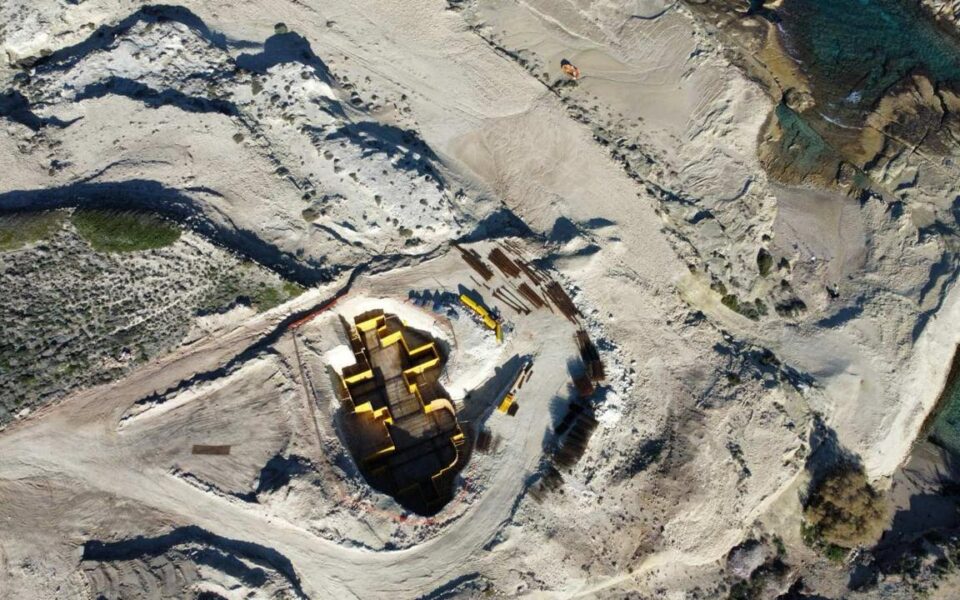Over the years, numerous studies have been carried out to describe a protected zone along the coast of Milos in the Aegean Sea, in which areas are determined in which the construction would be prohibited and landscapes are recognized by exceptional natural beauty such as Sarakiniko. However, the island ultimately remained without special protection status.
After the recent controversy for the construction of a five-star hotel on the popular holiday island, which triggered reactions from the municipal authority and parts of the local community, the Ministry of the Environment intervened in order to set up the construction of the building.
Kathimerini takes a look at the long -term but unsuccessful efforts to determine protective measures for Milos.
The contract for a spatial and residential planning study (Schoap) for Milos was signed in 2007. The project was stalled in 2015 and revived in 2021 under Mayor Manolis Mikelis. The Urban planner Mary Zifou, who worked on the study, described it as a “race against time” to update the plan. The revised study included provisions for the protection of the agricultural country and the creation of a landscape protection zone that includes Sarakiniko.
The study classified two coastal zones in the north and east of the island as areas with exceptional natural beauty. The northern zone stretched from Mandrakia to Mytakas, including Sarakiniko, while the eastern zone covered the area from Cape Kastanas to Spathi Bay. It was proposed to be banned in these areas of construction, land change and new road developments. In the study, Sarakiniko Beach's official award was recommended as a protected landscape, similar to Kleftiko.
The extent of the protection zone and its distance from the coast were topics of the debates in the meeting of the local council. A 250-meter limit was initially discussed, but modifications followed. A decision by the Council on November 5, 2022 presented the protection limit to 150 meters from the coast within 400 meters along the coast of Sarakiniko. Elsewhere in the zone, the buffer was reduced to 100 meters, while the border was set to about 350 meters around Sarakiniko and extended 150 meters on both sides of the area.
The following steps included an environmental impact study and a public consultation in July 2023. The situation on Milos was described as such: “The unplanned construction spreads in large parts of the rural landscape, which intervenes in agricultural land and the unmistakable geological formations of the island . The pressure on the expansion of the housing estate disturbs the coherence of Milos compact settlements and gives the impression of an scattered, unorganized suburb. The construction often extends into protected archaeological zones. “
As Zifou explained, the plan was not submitted within the deadline. The Ministry of the Environment later announced that unfinished studies throughout Greece would be integrated into a new planning framework. On Tuesday, it confirmed that a special plan for Milos is now being developed, with guidelines emphasizing the protection of landscapes and natural monuments such as Sarakiniko, which is known for its striking volcanic rock formations.
With regard to the five-star hotel in construction just over Sarakiniko Bay, investor representative Kathimerini announced that all legal proceedings were followed and all necessary permits were obtained.
The land sales contract of 2023 for the project contained a statement by a survey engineer in which the authorization of the property was confirmed for the construction. The engineer stated that the country was neither irrigated nor crossed by a current and did not fall into a Natura 2000 protection area or another environmentally regulated zone. The Ministry of the Environment is now re -evaluating the building permit.
